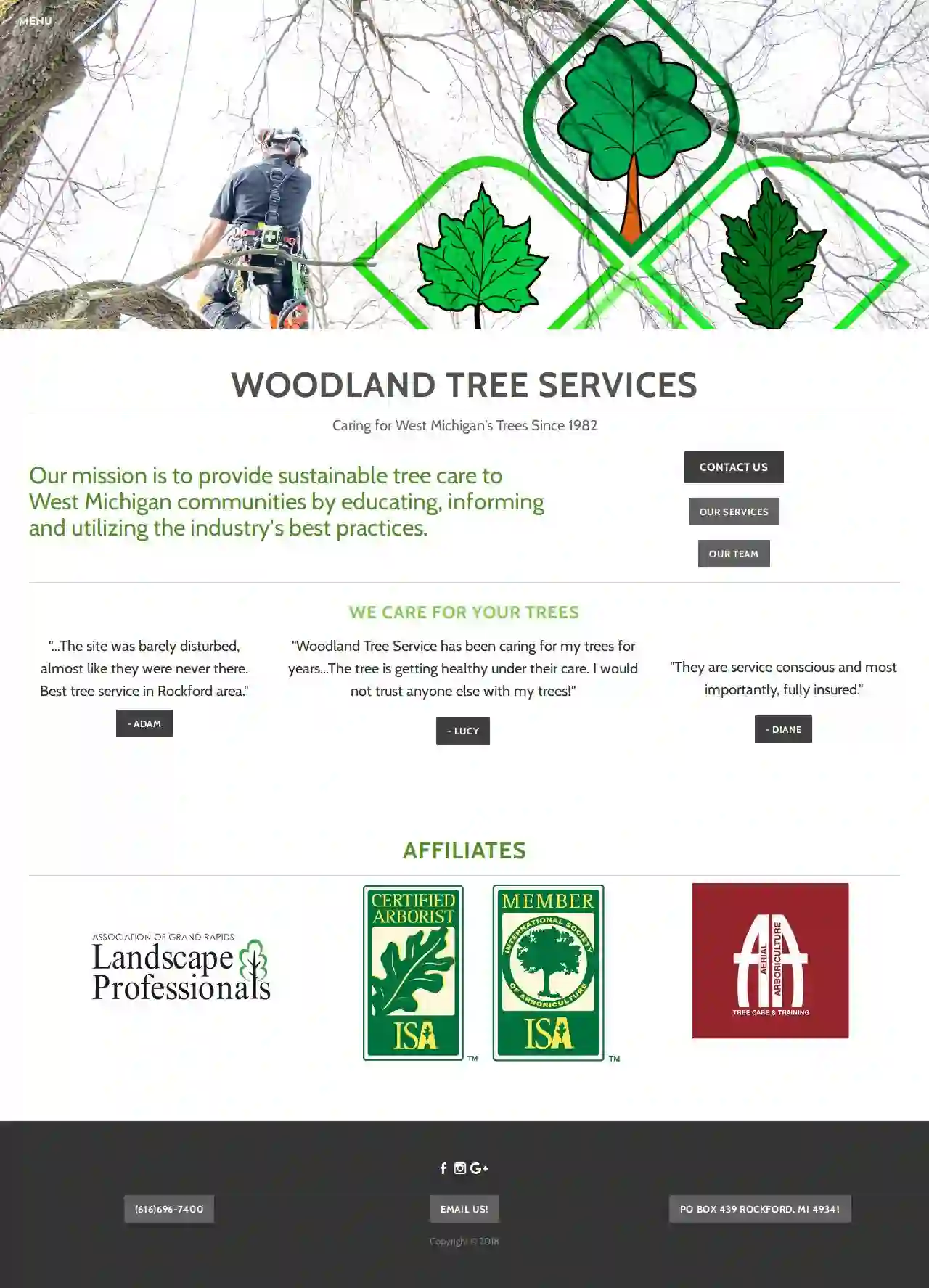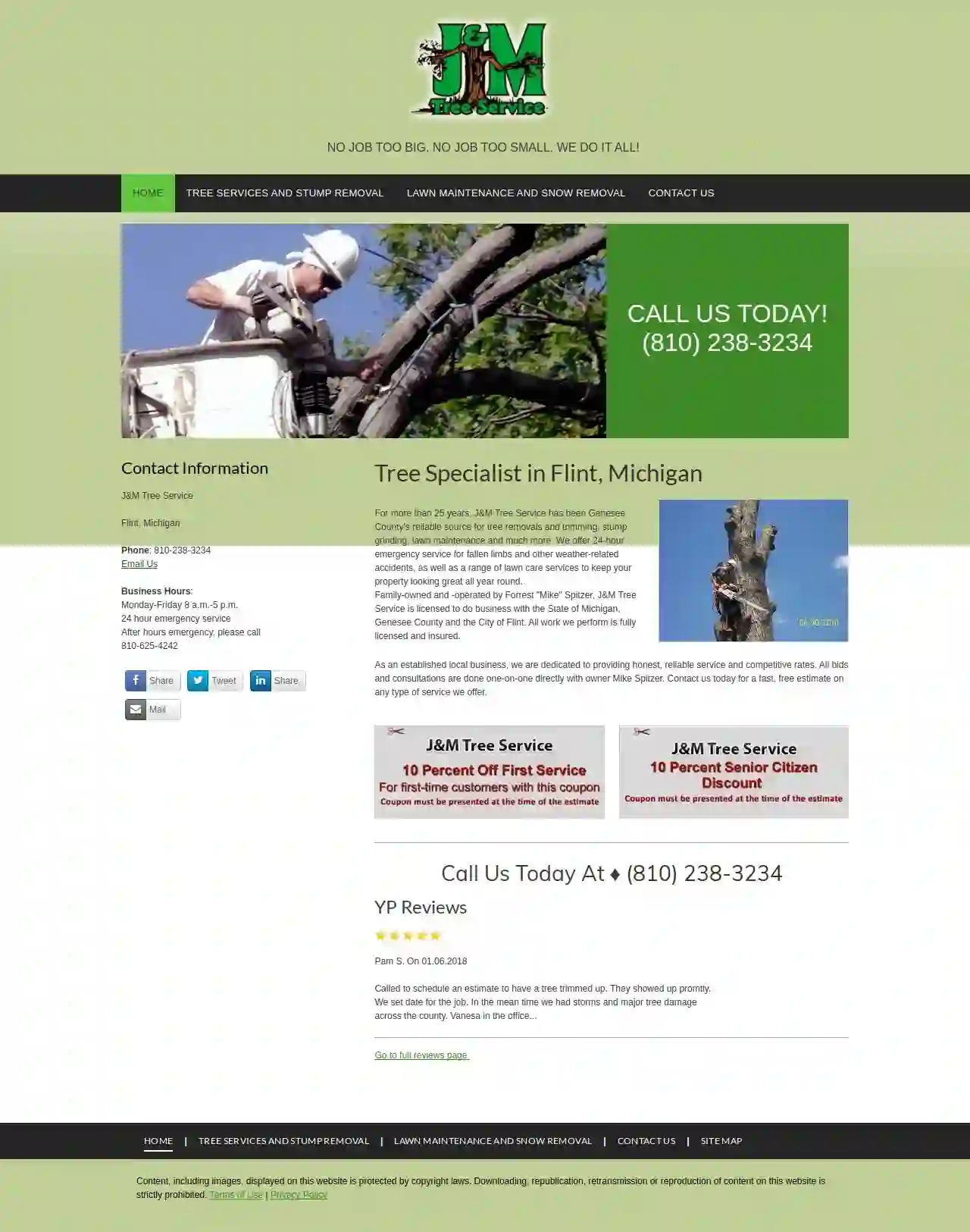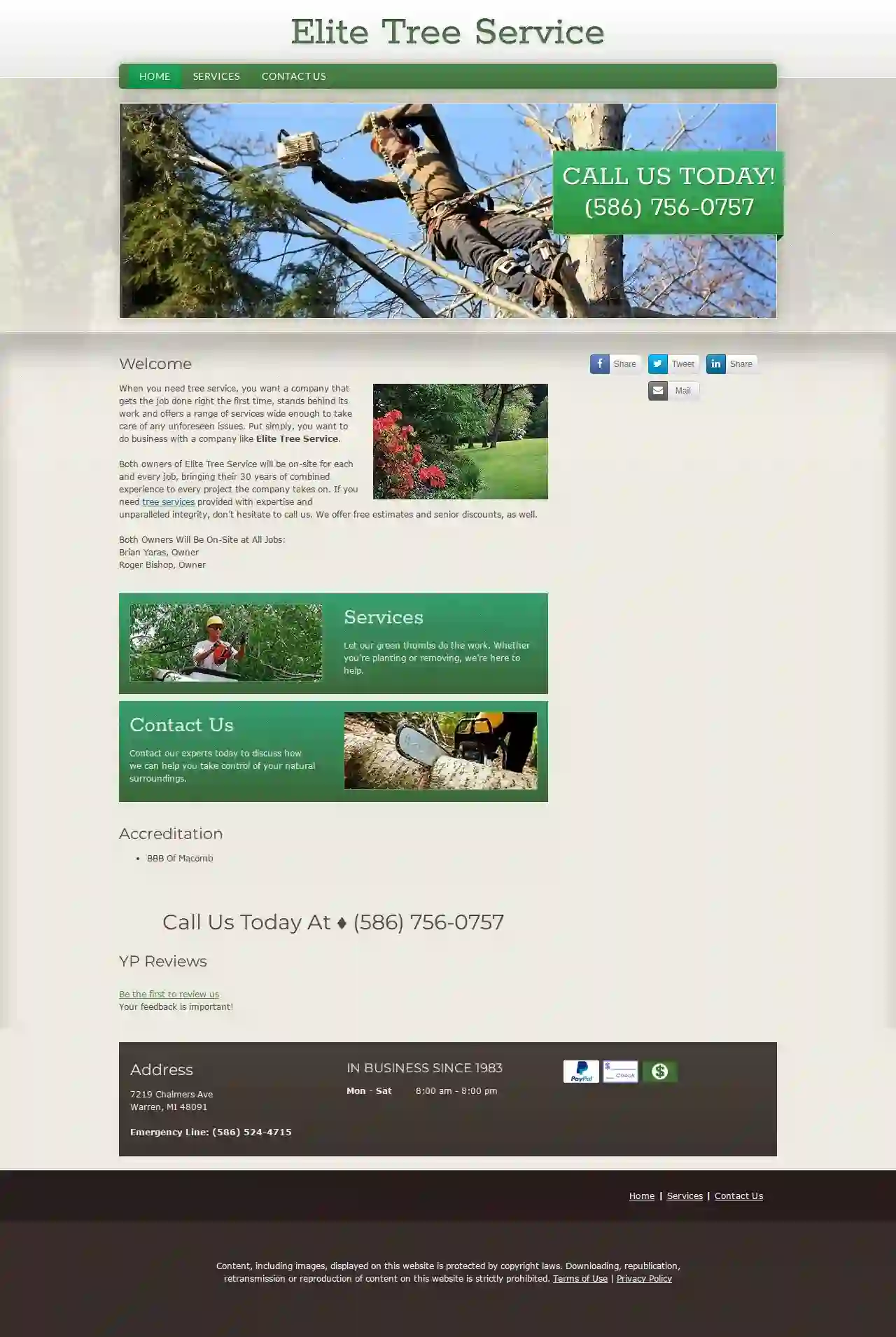Tree Trimming South Lyon
Top Tree Trimming Service in South Lyon
Get up to 3 Tree Pruning Service quotes for your project today! Compare profiles, reviews, accreditations, portfolio, etc... and choose the best offer.

Bartlett Tree Experts
4.134 reviews123 Elm Street, Suite 100, Beverly Hills, 90210, USBartlett Tree Experts is a leading scientific tree and shrub care company founded in 1907 by Francis A. Bartlett. With over 100 offices worldwide, Bartlett helps both residential and commercial customers maintain beautiful, healthy trees. The company offers a wide range of services including pruning, fertilization and soil care, cabling and bracing, plant analysis and diagnostics, storm damage, and insect and disease management. Bartlett is committed to providing high-quality tree care services and has been a government contractor for many years.
- Services
- Why Us?
- Accreditations
- Our Team
- Testimonials
- Gallery
Get Quote
Mr. Maple Tree Service LLC
512 reviewsDetroit, USMr. Maple Tree Service is a fully licensed and insured company founded in 2012 by Jose Berrios, who has over a decade of experience in the industry. The company specializes in tree removal, tree trimming, land clearing, shrub removal & pruning, and storm damage. They primarily serve Macomb, Oakland, and Wayne counties, and occasionally Washtenaw and Livingston counties in Southeast Michigan.
- Services
- Why Us?
- Testimonials
- Gallery
Get Quote
OMY Tree Service LLC
54 reviewsDetroit, MI, 48209, USOMY Tree Service LLC is a locally owned and operated tree service in Detroit, MI. They offer the best pricing for your needs and can work on tree projects both large and small with precision, safety, and efficiency. Their services include tree services, lawn care, and tree trimming.
- Services
- Why Us?
- Gallery
Get Quote
Amezola Tree Service
4.379 reviews12345 Main St, Suite 100, Warren, 48021, USWelcome to Amezola Tree Service. Our professional tree services combine experience and knowledge of tree health while utilizing commercial machineries like cranes, bucket trucks, chainsaws, and wood chippers. LICENSED. BONDED. FULLY INSURED.
- Services
- Why Us?
- Accreditations
- Testimonials
- Gallery
Get Quote
Woodland Tree Services Inc
4.842 reviewsPO Box 439, Rockford, 49341, USCaring for West Michigan's Trees Since 1982. Our mission is to provide sustainable tree care to West Michigan communities by educating, informing and utilizing the industry's best practices.
- Services
- Why Us?
- Accreditations
- Our Team
- Testimonials
- Gallery
Get Quote- As
Ascend Tree Service, LLC
1Suite 100, 123 Main St, Cityville, 12345, USOur company is dedicated to providing top-quality services to our clients. With a team of experienced professionals, we aim to deliver exceptional results that meet and exceed our clients' expectations. Our mission is to build long-lasting relationships with our clients by offering them the best possible solutions for their needs.
- Services
- Why Us?
- Accreditations
- Our Team
- Testimonials
- Gallery
Get Quote 
Two Rivers Tree Service
4.8122 reviews123 Elm Street, Traverse City, 49601, USTwo Rivers Tree Service is a family-owned and operated business dedicated to providing top-quality tree care services to residents and businesses in Michigan. With over 15 years of experience, our team of certified arborists and skilled professionals are committed to delivering exceptional service, ensuring customer satisfaction, and maintaining a safe and healthy environment for our clients and their properties. Our mission is to provide expert tree care solutions that enhance the beauty and value of your property while promoting a safe and sustainable urban forest.
- Services
- Why Us?
- Accreditations
- Our Team
- Testimonials
Get Quote- Mi
Michigan Land Services
517 reviews123 Main St, Suite 200, Ann Arbor, 48103, USMichigan Land Services is a leading provider of land surveying and mapping services. With a team of experienced professionals, they offer a wide range of services including boundary surveys, topographic surveys, and construction staking. Their mission is to provide accurate and reliable land surveying services to help clients make informed decisions about their property. They are fully accredited and insured, with over 15 years of experience in the industry.
- Services
- Why Us?
- Accreditations
- Our Team
- Testimonials
- Gallery
Get Quote 
J&M Tree Service
4.239 reviews1234 Main St, Flint, 48507, USJ&M Tree Service is a family-owned and operated business based in Flint, Michigan. With over 25 years of experience, they specialize in tree removals, trimming, stump grinding, lawn maintenance, and snow removal. They offer 24-hour emergency service for fallen limbs and other weather-related accidents. The business is licensed to operate in the State of Michigan, Genesee County, and the City of Flint, ensuring all work is fully licensed and insured. Their commitment to providing honest, reliable service and competitive rates has made them a trusted source in Genesee County.
- Services
- Why Us?
- Accreditations
- Our Team
- Testimonials
- Gallery
Get Quote
Elite Tree Services
4.475 reviewsDetroit, US- Services
- Why Us?
Get Quote
Over 1,985+ Tree Surgeons on our directory
Our tree service experts operate in South Lyon & surrounding areas!
TreeServiceMatch has curated and vetted Top Tree Surgeons near South Lyon. Find a top & trustworthy pro today.
Frequently Asked Questions About Tree Trimming
- Species: Some trees require more frequent trimming than others.
- Age: Younger trees benefit from more frequent pruning to establish good structure.
- Health: Diseased trees might need more frequent attention.
- Growth rate: Faster-growing trees require more regular pruning.
- Location: Trees near structures or power lines might need more frequent trimming for safety.
- Make clean cuts: Use sharp, clean pruning tools to prevent the crushing or tearing of branches, reducing the risk of disease and decay.
- Follow the branch collar: This is the swollen area at the base of the branch. Never cut back into the branch collar, as this creates a wound that is difficult for the tree to heal.
- Remove dead, damaged, or diseased branches: This improves tree health and reduces hazards.
- Thin the crown: Selectively remove branches from within the crown to improve light penetration, air circulation, and reduce wind resistance. Thinning helps to maintain the natural shape of the tree without reducing its overall size.
- Reduce the crown: If necessary, reduce the size of the crown by shortening the branches back to strong lateral branches. This helps manage the size of the tree without damaging it.
- Avoid topping: Topping is a harmful practice that creates ugly growth and weakens trees. Never top your trees.
- Size and shape of the tree: The larger the tree, the more extensive the work will be.
- Accessibility: If the tree is difficult to reach, specialized equipment might be needed.
- Type of pruning required: Crown reduction or thinning can increase costs.
- Location: Regional differences in labor costs will affect pricing.
- Waste disposal: Removing and disposing of pruned branches adds to the expense.
- Use sharp, clean tools: Dull tools can cause tearing or crushing of the branches and increase the risk of disease.
- Wear safety gear: Protective clothing, eye protection, and gloves are crucial.
- Inspect the tree: Identify the branches that need pruning, such as dead or damaged branches.
- Use proper pruning techniques: Make clean cuts, following the branch collar. Don't remove too much of the crown in a single session.
- Dispose of the branches responsibly: Chip the debris or dispose of it according to local guidelines.
How often should I trim my trees?
A general guideline is to have trees inspected at least every 1-2 years by a certified arborist. They can create a tailored maintenance plan that includes the appropriate pruning schedule.
What is the best way to prune a tree?
For complex pruning tasks, such as crown reduction or thinning, it's strongly recommended to hire a certified arborist who has the expertise and experience to perform the work properly and safely.
How much does it cost to trim a large tree?
Requesting quotes from multiple tree care companies is highly recommended for receiving competitive pricing and accurate estimates for large tree trimming projects. TreeServiceMatch will help you compare your options and make an informed choice.
How to prune a tree safely?
How often should I trim my trees?
- Species: Some trees require more frequent trimming than others.
- Age: Younger trees benefit from more frequent pruning to establish good structure.
- Health: Diseased trees might need more frequent attention.
- Growth rate: Faster-growing trees require more regular pruning.
- Location: Trees near structures or power lines might need more frequent trimming for safety.
A general guideline is to have trees inspected at least every 1-2 years by a certified arborist. They can create a tailored maintenance plan that includes the appropriate pruning schedule.
What is the best way to prune a tree?
- Make clean cuts: Use sharp, clean pruning tools to prevent the crushing or tearing of branches, reducing the risk of disease and decay.
- Follow the branch collar: This is the swollen area at the base of the branch. Never cut back into the branch collar, as this creates a wound that is difficult for the tree to heal.
- Remove dead, damaged, or diseased branches: This improves tree health and reduces hazards.
- Thin the crown: Selectively remove branches from within the crown to improve light penetration, air circulation, and reduce wind resistance. Thinning helps to maintain the natural shape of the tree without reducing its overall size.
- Reduce the crown: If necessary, reduce the size of the crown by shortening the branches back to strong lateral branches. This helps manage the size of the tree without damaging it.
- Avoid topping: Topping is a harmful practice that creates ugly growth and weakens trees. Never top your trees.
For complex pruning tasks, such as crown reduction or thinning, it's strongly recommended to hire a certified arborist who has the expertise and experience to perform the work properly and safely.
How much does it cost to trim a large tree?
- Size and shape of the tree: The larger the tree, the more extensive the work will be.
- Accessibility: If the tree is difficult to reach, specialized equipment might be needed.
- Type of pruning required: Crown reduction or thinning can increase costs.
- Location: Regional differences in labor costs will affect pricing.
- Waste disposal: Removing and disposing of pruned branches adds to the expense.
Requesting quotes from multiple tree care companies is highly recommended for receiving competitive pricing and accurate estimates for large tree trimming projects. TreeServiceMatch will help you compare your options and make an informed choice.
How to prune a tree safely?
- Use sharp, clean tools: Dull tools can cause tearing or crushing of the branches and increase the risk of disease.
- Wear safety gear: Protective clothing, eye protection, and gloves are crucial.
- Inspect the tree: Identify the branches that need pruning, such as dead or damaged branches.
- Use proper pruning techniques: Make clean cuts, following the branch collar. Don't remove too much of the crown in a single session.
- Dispose of the branches responsibly: Chip the debris or dispose of it according to local guidelines.